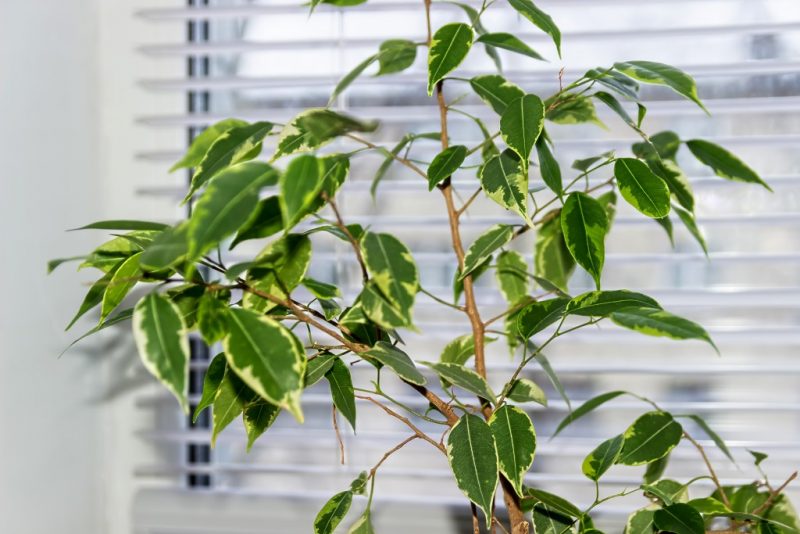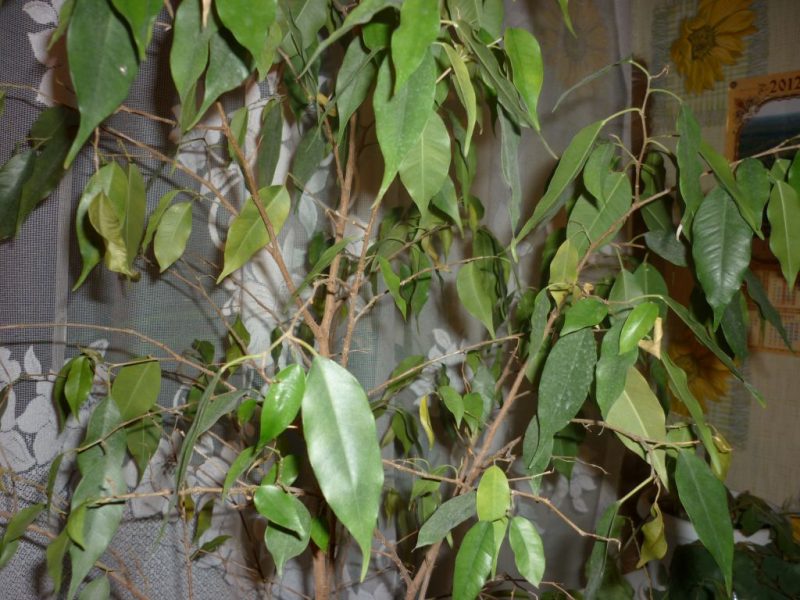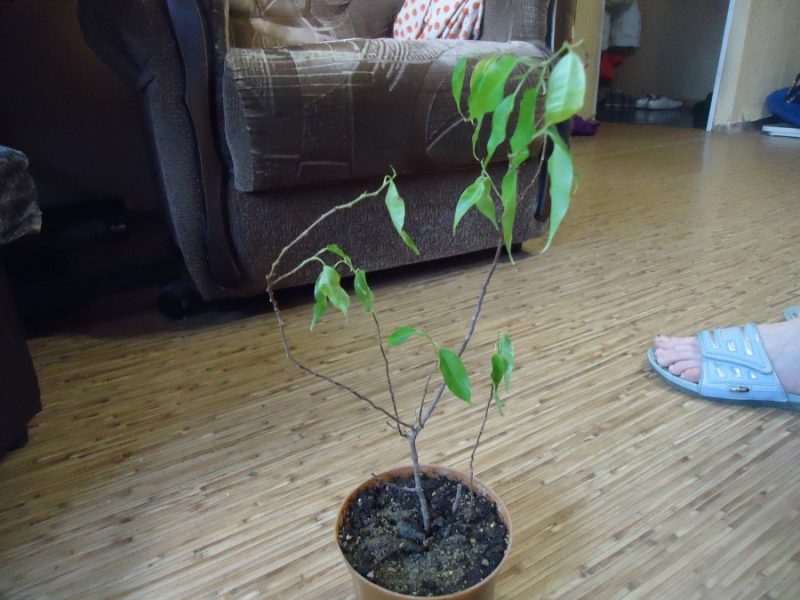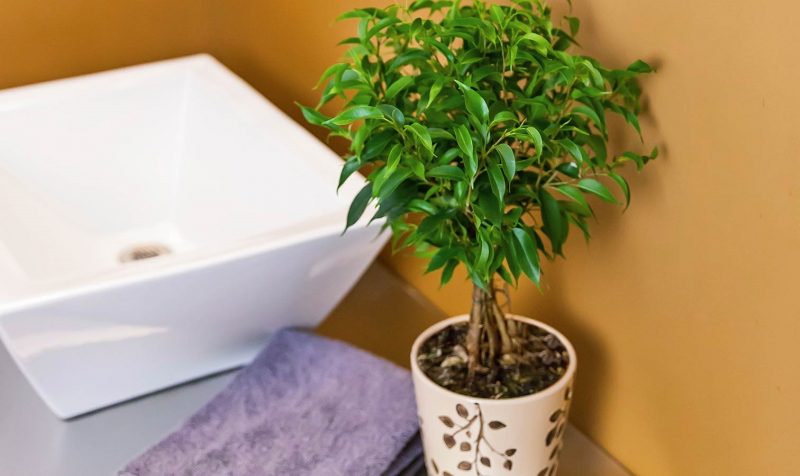If Benjamin's evergreen ficus drops leaves, what should the grower do? This plant is completely capricious and tenacious, it shows signs of malaise long before the "catastrophe" - a complete loss of foliage. How to care for him, read the article.
Material Content:
- 1 Natural Reasons Why Ficus Benjamin Drops Leaves
- 2 Major Care Mistakes
- 3 Diseases and pests of Ficus Benjamin
- 4 Why ficus discards leaves after transplanting
- 5 Leaves fall at different times of the year - why
- 6 What to do if the plant still has fallen leaves
- 7 Important recommendations for care, fertilizing and fertilizing
Natural Reasons Why Ficus Benjamin Drops Leaves

Fallen leaves can be caused by natural causes - their aging. One leaf lives about 3 years, then it falls, and a new one grows in its place. If the plant is healthy, much more new leaves grow than fall.
Another thing is if the ficus dropped 50 leaves in a day. This should alert, you need to look for the cause of the malaise of the plant.
Major Care Mistakes

Common care mistakes that may cause foliage to drop and how to fix them:
- After the flower was rearranged in worse conditions, where there is less light, the leaves began to fall. The plant is placed on the brightest window or organize illumination for it.
- Draft from an open window or hypothermia on a cold windowsill after an evening watering causes the plant to drop leaves in winter. The minimum temperature at which the ficus can survive is +12 ° C, it must be protected from cold air, and it is advisable to water it in the morning so that the root system does not cool.
- The root rots from the overflow of the plant, and the leaves immediately begin to crumble. To prevent this from happening, in winter you can use watering through a pallet 2 times a week. In the morning, pour water into the pan for 40 minutes, if the flower "drank", pour more. For irrigation use clean water at room temperature.
There is a belief that the ficus of Benjamin can not be rotated. This is not true, for a uniform growth of branches once every two weeks, a flower can and should even be turned 45 or 90 degrees to the light source.
Diseases and pests of Ficus Benjamin
With intensive leaf fall, you need to carefully examine the ficus, whether there are pests on it. Perhaps a scab has settled on the plant. The leaves will be covered with a sticky coating, will begin to turn pale, dry and crumble. Having noticed insects, they are carefully cleaned with a cotton swab, and the plant is treated with an insecticide.

If the root system is rotten, the plant can also drop leaves. An unpleasant, musty smell from the ground speaks about root problems. Ficus should be immediately transplanted into new soil, washing and treating the root with fungicide.
Why ficus discards leaves after transplanting
Ficus Benjamin sometimes discards a small amount of leaves after transplanting. This is natural since the plant is under stress. It is especially difficult for him if the root system is damaged. Recovery may take 1.5–2 months. It is advisable not to abuse watering and not to use fertilizers at this time.
It is undesirable to transplant indoor ficus in the fall, and even more so in the winter, when its life processes are slow, growth stops. In March or late February, the plant "wakes up" and transfers the movement to a fresh, fertile soil with great enthusiasm. If the place where the ficus stands is sunny, and the soil is loose, with good drainage, new leaves quickly appear and shoots begin to grow.

If you plant Benjamin's ficus in a pot, which is much larger in volume than its root system, problems can begin several months after transplantation. Moisture from the surrounding roots of the substrate will not be absorbed, as necessary, the process of decay will begin.
An important role is also played by the quality of the soil into which the plant is planted. It is undesirable that it be a simple peat that absorbs moisture and holds it for a long time. The earth should be loose, it must pass water and air well. You can buy special soil for ficuses, and put a drainage layer of about 3 cm on the bottom of the landing tank.
It is interesting:clerodendrum at home
After a transplant, it is advisable to water the problematic plant under the root of Epin, and spray on the leaf with Zircon to alleviate stress.
Leaves fall at different times of the year - why
In the cold season, ficus spoils for one of three reasons - low humidity, cold and lack of light.
Ficus suffers during the heating season in autumn and winter from dry air in the apartment, the plant needs a humidity of about 60%.

Due to the low humidity, its leaves turn yellow, curl and fall off. You can spray the flower with water on the leaves 2 times a week or put a wet towel on the battery in the room.
In summer and spring, leaves can fall due to malnutrition and pest damage. How to feed the plant, read on.
What to do if the plant still has fallen leaves
Ficus can lose all foliage, and stay with bare branches if you do not follow the simple principles of caring for it at different times of the year.
The problem of the “naked” ficus is that it may not have enough strength to recover. Like all evergreens, it stores nutrients in leaves, its trunk and branches serve as “conductive” vessels between the root and crown. Therefore, noting that the plant begins to drop foliage for unknown reasons, you need to immediately sound the alarm.

If the ficus is completely circled, it is not necessary to throw it away immediately, try to save:
- remove the ficus from the ground, and inspect the roots, an unpleasant "musty" smell from them indicates a disease;
- under a warm shower, gently rinse off all soil residues;
- trim rotten roots;
- put the plant for some time in water with activated charcoal and a drop of complex fertilizer (only the roots should be in the water, the root neck and trunk should be in the air);
- change water daily, while washing the roots under a warm shower;
- ficus should stand in clean, spring water at room temperature;
- add fertilizer not daily, but once every 7-10 days.
Such rehabilitation within a month will help the plant survive, especially if it has a few green leaves. When white shoots of new roots appear on the roots of the ficus, it must immediately be planted in loose soil, with good drainage.
Important recommendations for care, fertilizing and fertilizing

The rules for caring for all varieties of ficus are similar. These plants come from warm countries; they like warmth and plenty of light. For normal growth, they need good loose soil in a pot, spraying with water on leaves and monthly top dressing.
In winter, it is advisable not to fertilize the flower. From March to October, top dressing is necessary for the normal growth of ficus. Use complex fertilizers for ornamental foliage plants (ratio of nitrogen, potassium and phosphorus 8: 4: 4), adding them to water when watering 2 times a week. Organic-based preparations such as biohumus can be used.
Well-groomed ficus will delight you with green leaves all year round. Even when there are white snowdrifts and severe frost outside the window, you will have a small evergreen garden on your windowsill.












